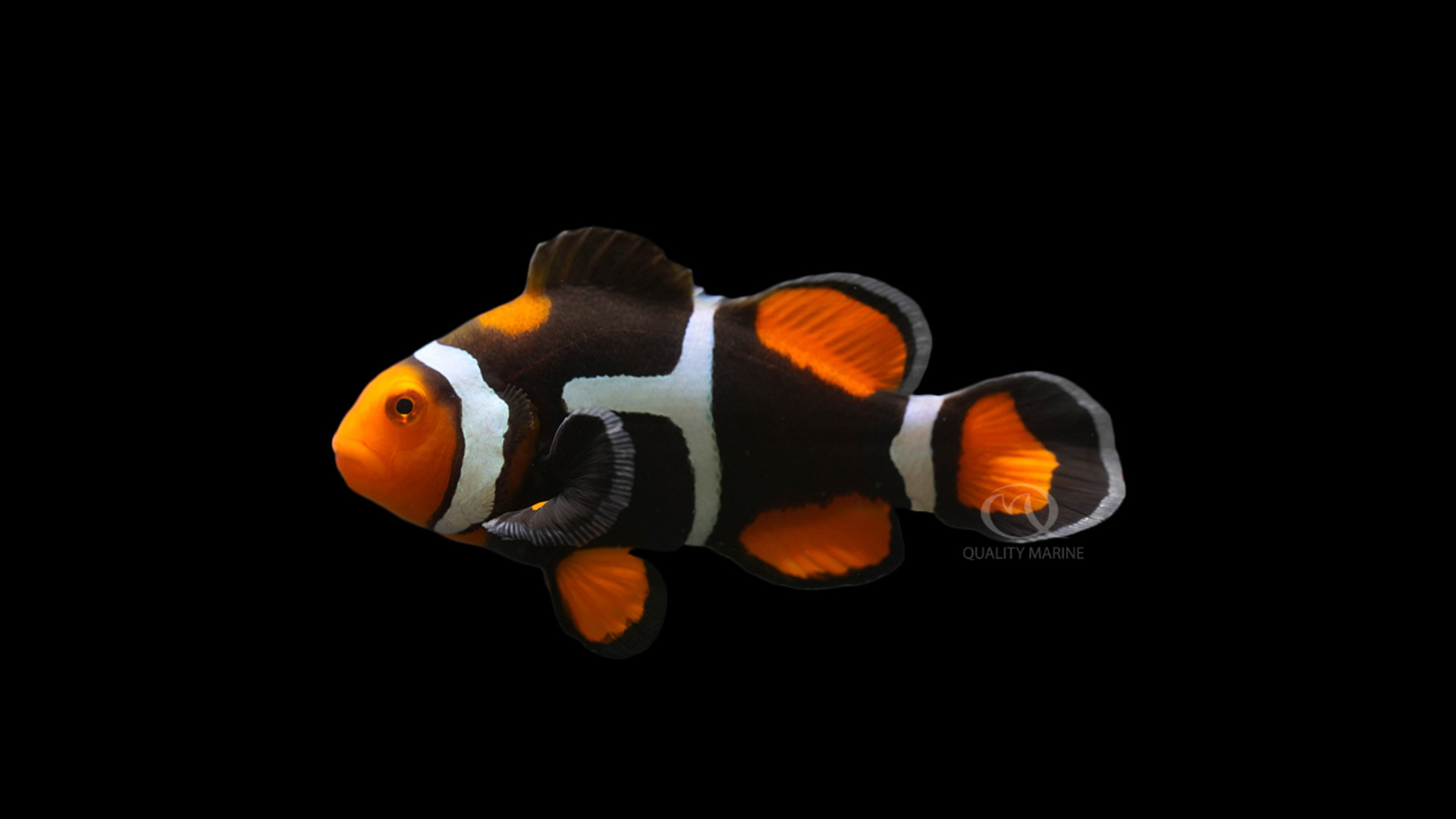Count Percula of Melanesia!

The Percula Clownfish is perhaps the most recognizable marine fish this side of the great white shark. Their distinctive coloration, interesting swimming mechanics and their propensity for nestling about among the stinging tentacles of anemones had made them famous in photos and art well before Finding Nemo brought them to Hollywood.
True Percula Clownfish (Amphiprion percula) have this name because of their nearly identical appearance to a close cousin known as an Ocellaris or False Percula Clownfish (Amphiprion ocellaris). The internet will give you a few ways to tell these two fish apart; some say that the colors are darker on the True Percula, but this is pretty subjective to individual fish. True Percula Clowns can get up to an inch longer when fully grown, but if you don't know the age of a fish, the best way is to count the spines on the dorsal fin (also not super easy on a swimming critter). True Percs will usually have ten dorsal spines (though some have nine) and Ocellaris will usually have eleven dorsal spines (though tragically, some have ten, really confusing the matter!) Luckily for the home hobbyist, care for both species is basically identical.
Even before the currently widespread captive breeding of these fish, and the resulting myriad of color forms available, wild True Percula Clowns had some distinctive regional color differences, and among these, a heavy staff favorite has long been the Super Black Melanesian True Percula clowns. These stunning fish feature all the orange, white and black barring expected of Percs everywhere, but with a large area of deep black on the central portion of the fish with a black fringe on the perimeter of the caudal or tail fin (and sometimes others). They are on the big side for clowns, and it is possible for the largest females to get a tad over four inches long!
Melanesian Super Black True Percula Clownfish are a great candidate for most aquariums. Even the largest adults will not need much aquarium space, tending to stick to one area or another. We suggest keeping them in 40-gallon aquariums or more. In this size, you could easily keep a large group of four of five. Bigger groups can work in larger aquariums, but more than one female may develop, and you'll want to give them distinct territories to call their own. Clowns of all sorts can be kept singly, and if this is what you're looking for in your display, the Super Black Percs will be a great candidate for this. These clowns are the picture of reef safe, and will not bother corals, clams or other inverts intentionally. The only word of caution is that clowns make try to take up residence in corals that have long flowing tentacles (especially those that resemble anemones, like flowerpots) and these corals may not respond well to this. They are unlikely to be aggressive with any fish other than clowns, but could become meals for specimens like Lionfish if the clown does not have an anemone to hide in.
Clownfish have a very interesting development in regard to sex. Juveniles will first develop male sex organs, and the most dominant, largest individual will then develop into a female. The males in this space will then create a hierarchy based on size, with the largest being the only one who will fertilize the females' eggs. If the female is removed, for any reason, that largest male will segue into a female and take her place, with the next largest male taking his place! In the wild, this space is generally defined by an anemone, but anemone keeping is not a requirement for housing one or even many clownfish.
The anemone that a clownfish decides to take up residence in is called a “host” anemone. Perculas are very adaptable as to the anemones they will makes homes of. In the wild they are most often found in large Heteractis magnifica (or Magnificent Anemones), as well as few different Carpet Anemones in the Stichlodactlya genus. In the home aquarium they have been found making themselves comfy in just about every anemone that naturally hosts anemones in the wild, and even a couple that don't, not to mention more than a few different corals and polyps! Clownfish and potential homes for them is another article coming soon.
Super Black Percs are pretty easy to keep, in the wild, they eat just about anything that floats past their home, and this habit of sampling suspended stuff lends itself to them adjusting to sinking pellets very easily. In house, here at Quality Marine, we feed them a mix of Nutramar's Marine Complete Sinking Pellets and a mix of mysis and other thawed marine based meaty offerings from Gamma foods. They can be maintained in full vigor, color and health on these pellets alone if a hobbyist so chooses, though additional food types is never a bad idea.
Water quality demands for these fish is low and will often be dictated by the other inhabitants of the aquarium where the clowns live. If you aren't keeping corals, the Percs will be happy as long as you keep the pH around 8, the temp around 75 degrees Fahrenheit and the specific gravity between 1.021 and 1.026. As always, Ammonia and Nitrite should be zero, and even with fish like these that aren't overly susceptible to nitrates, you should strive to keep them under 5ppm.
If you are a hobbyist looking for a clownfish with absolutely iconic natural coloration, there are few equals (if any) to the Melanesian Super Black Percula. If you're someone who is interested in bringing some wild genetics into their clownfish breeding project this fish is also an excellent candidate. These sustainably wild caught Percs come from one of our best performing Short Supply Chain source partners and have our highest recommendation. Head over to your Local Fish Store and ask about the getting you some today!